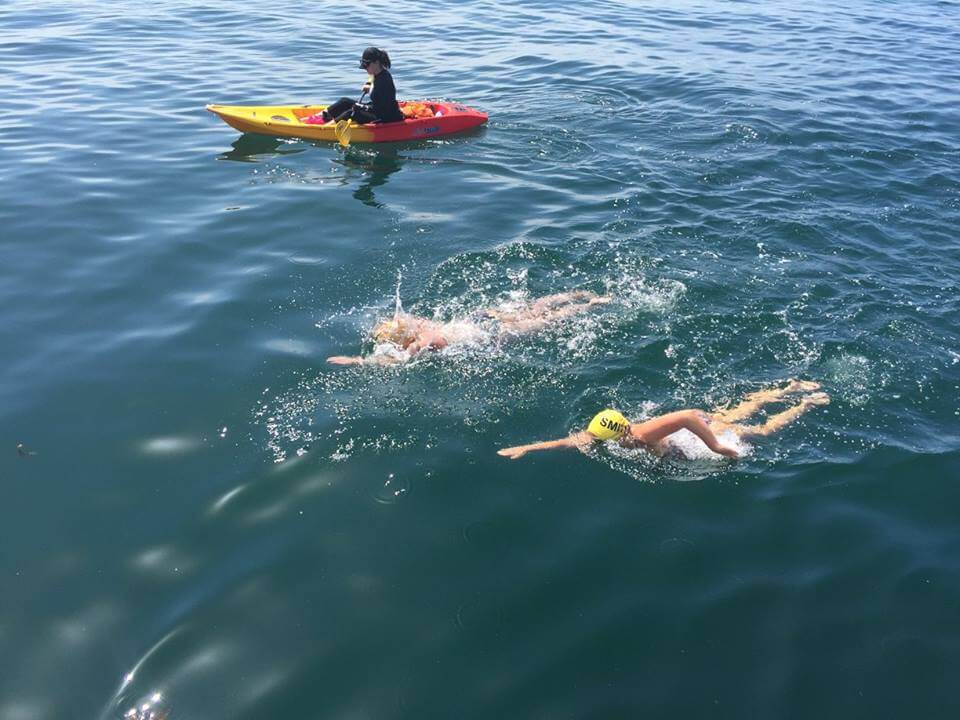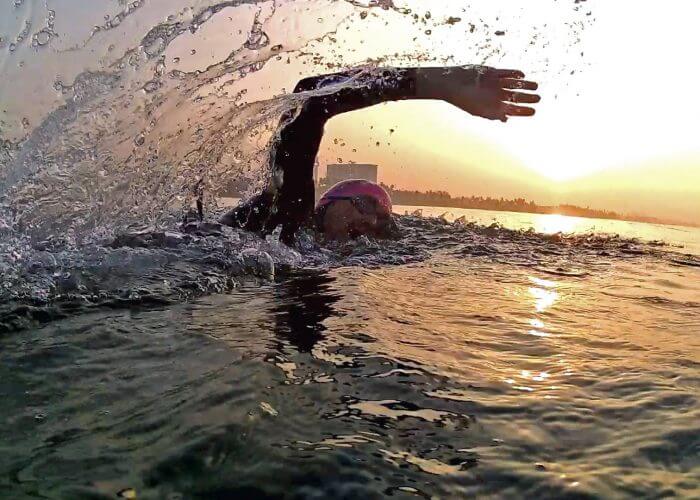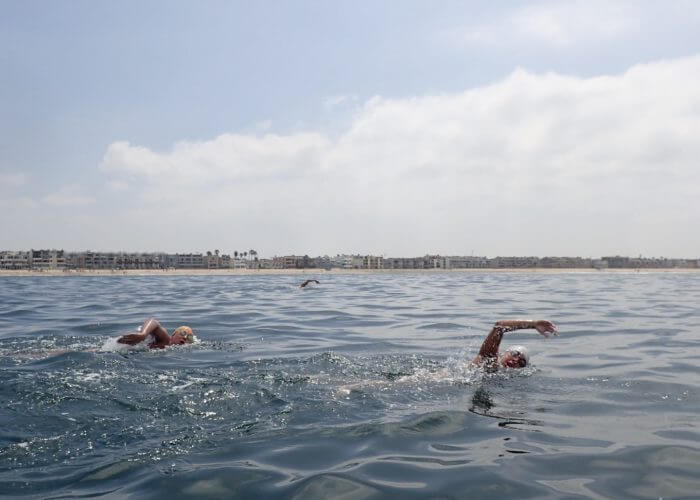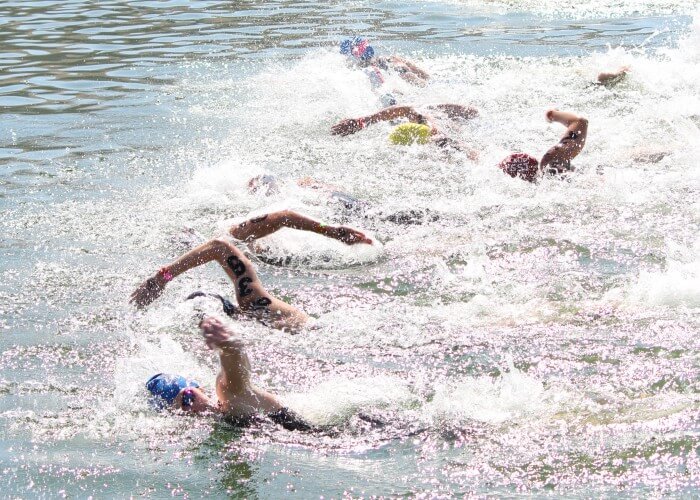4 Ways to Prep For Your First Open Water Race

By Abby Bergman, Swimming World College Intern.
Open water racing is both a fun pastime for pool swimmers as well as a unique sport comprised of its own set of rules and skills. Many open water champions begin their careers in the pool and then transition over into open water racing. This move to a new sport may be intimidating but can also be a rewarding way to find passion and success through swimming.
To make this transition easier, I spoke to marathon and open water swimmers and have compiled a list of ways to prepare for your first open water race.
1. Have a pre-race routine.

Photo Courtesy: Chris Georges
Open water racing can be scary for newcomers because it entails different environments and strategies from pool swimming. As with pool swimming, however, establishing a set procedure to use before each race can go a long way towards decreasing nerves and improving performance.
“As for race prep, in line with the whole ‘lowering anxiety’ thing,” says Masters and open water coach Chris Georges, “I think it’s really important to have a routine before the race that you know and feel comfortable with: again, a bunch of mundane things which, when experienced on a very regular basis, serve to calm your mind.” By creating a routine to use before every race, swimmers can increase mental and physical confidence.
2. Practice swimming in open water.

Photo Courtesy: Eliza Cummings
One of the most exciting, but also scariest parts of open water swimming is that it takes place in an unpredictable setting. As a result, practice in open water is necessary to gaining expertise and increasing comfort in the water.
“Getting a feel for the differences between pool and open water is a big mental step,” says former Smith College swimmer Emily Lane. “I know sometimes looking down into really deep water can be disorienting, so it’s good to know what it’s like ahead of time so you can prepare for that.”
There’s no substitute for practice to help swimmers decrease anxiety leading up to these types of races. “Repeat the mundane but entirely uncontrolled experiences of open water,” explains Georges. “Close-quarter swimming, entering through surf, sighting, maintaining stroke rhythm in choppy water, things like that – over and over and over until the athlete is desensitized to them, and thus not anxious any more.” In addition to training in open water leading up to a race, it can also be helpful to practice swimming on the race course because it will likely differ from the training environment.
3. Breakdown the necessary pieces.

Photo Courtesy: Griffin Scott
All the little things that need to come together to achieve a successful race can seem overwhelming, but by staying organized and helping the pieces fit together, athletes can feel confident in their training.
“In preparing for a race, (and every open water training swim deserves the same thoughtful preparation as a competition), I find it useful to deconstruct the key elements: environmental conditions, appropriate equipment, adequate feeds, physical readiness, conscious empowerment, and the mental acuity,” marathon swimmer and coach Jax Cole suggests. “A fantastic swim happens when each of these elements work well together.” In addition to compiling necessary pieces to an enjoyable and successful open water race, swimmers should also practice with the equipment and mindset they plan to use on race day.
4. Remember to have fun.

Photo Courtesy: Jax Cole
Perhaps the most important aspect of an enjoyable race is bringing a positive point of view and remembering to have a good time. “Have an attitude like this is going to be fun so you don’t get too serious or scared,” open water swimmer and coach Kristin Epley Gardner recommends. “I tell the people I train that it’s okay to be close to people and remember to sight a lot, you’re going have a great time.”
Although racing in open water for the first time can be scary, by taking these four simple steps, you can help to ensure you’re up for the challenge.
All commentaries are the opinion of the author and do not necessarily reflect the views of Swimming World Magazine nor its staff.




Makayla Sargent
Ana Belén Lander Pato G.Cano
Gracias sis
Sydney Tobias
Samantha Tree
Thank you x